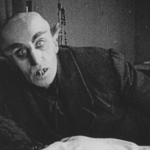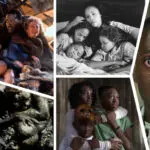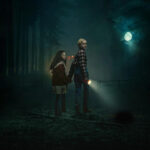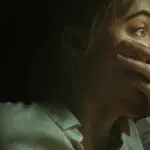Table of Contents
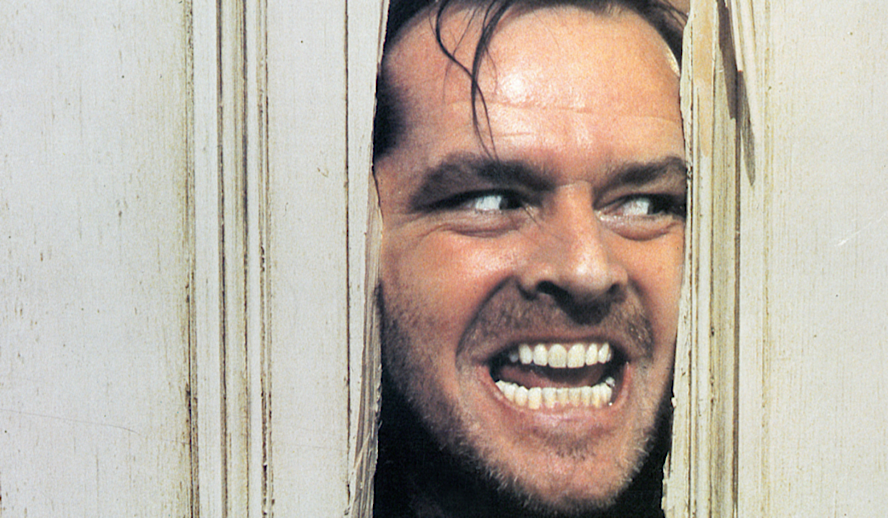
Photo: Horror Classics
From the dawn of narrative filmmaking, Cinema has employed a unique capacity for inspiring terror. Few mediums have proven better suited to raising hairs on necks and sending chills down spines as film and over the last century of its existence it has offered up some truly unforgettable frights. The Horror genre has evolved right alongside the artform itself, present in some of the earliest moving pictures as well as the latest modern blockbusters. Whereas other popular genres like the windswept Western and the backlot Musical became resigned to Hollywood past, Horror films endured in the eternal present, evolving within the cultural milieu to match the prevailing mood of the moment. This flexibility has allowed the genre to foster some of Cinema’s greatest tableaus and most memorable images, a lingering splotch of nightmare on the ethereal dreamscape that is film history.
Related article: EXCLUSIVE: ‘Dune’ Full Commentary, Reactions, Making Of – Timothee Chalamet, Zendaya, Oscar Isaac
Related article: ‘No Time to Die’ Royal Premiere & Reactions – Daniel Craig, Rami Malek, Léa Seydoux & More
Related article: ‘Halloween Kills’ Full Commentary & Reactions, Behind the Scenes – Jamie Lee Curtis & More
Related article: The Hollywood Insider’s CEO Pritan Ambroase: “The Importance of Venice Film Festival as the Protector of Cinema”
10 Great Horror Classics
1920s: ‘Nosferatu’ (F.W. Murnau, 1922)
Few silent films have remained as vivid within the zeitgeist of film as masterful German expressionist F.W. Murnau’s haunting vampire parable and unauthored adaption of Bram Stroker’s Dracula ‘Nosferatu’ (1922). Considered by most to be the foremost cinematic text on the vampire mythos, the film tells the story of a headstrong young real estate agent deployed to Transylvania to aid a prospective client by the name of Count Orlok. Before he reaches the Count’s fearsome manor the agent takes refuge at a local inn, the residents stricken with fear at the mere mention of Orlok’s name.
Upon meeting the ghoulish creature, adorned with fingers as long as a butcher’s knife and teeth as sharp as a razor, the agent becomes suspicious that his client is a vampire after witnessing his bloodlust and waking up with puncture wounds on his neck. The agent returns home only for the devilish Count Orlok to take an interest in his wife, stalking the pair and spreading a plague around the village. The film culminates in an unforgettable clash between good and evil that became central iconography to the vampire subgenre and the larger language of Cinema.
Honorable Mentions: ‘The Cabinet of Dr. Caligari’ (Robert Wiene, 1920), ‘The Phantom of the Opera’ (Rupert Julian, 1925), ‘A Page of Madness’ (Teinosuke Kinugasa, 1926), ‘The Phantom Carriage’ (Victor Sjöström, 1921), ‘Faust’ (F.W. Murnau, 1926)
Related article: MUST WATCH – The Hollywood Insider’s CEO Pritan Ambroase’s Love Letter to Black Lives Matter – VIDEO
Subscribe to The Hollywood Insider’s YouTube Channel, by clicking here.
1930s: ‘The Bride of Frankenstein’ (James Whale, 1935)
All those versed in film history could have guessed that James Whale would be responsible for the best horror film of the 1930s, if not for his formidable talents than simply for the sheer volume of his work. Whale was the mastermind beyond the infamous horror heyday at Universal Studios during the decade, responsible for establishing the movie monsters that would haunt countless generations in films like ‘Frankenstein’ (1931), ‘The Old Dark House’ (1932), ‘The Invisible Man’ (1933), and his brilliant science-fiction sequel ‘The Bride of Frankenstein’ (1935). Picking up right where the first film left off, Whale’s addendum to the tale of the modern Prometheus sees the infamous monster finds his match in the form of his titular bride.
The culmination of the expansive Universal horror catalog, Whale’s tragic sequel sees the creature attempt to find and express the love he retained within his fleeting humanity. The film certified Frankenstein as the definitive movie monster, though the likes of Dracula, the Wolf Man, and the Creature of the Black Lagoon certainly deserve a spot of their own in the pantheon.
Honorable Mentions: ‘Island of Lost Souls’ (Eric C. Kenton, 1932), ‘The Black Cat’ (Edgar G. Ulmer, 1934), ‘Vampyr’ (Carl Theodor Dreyer, 1932), ‘The Invisible Man’ (James Whale, 1933), ‘The Old Dark House’ (James Whale, 1932)
1940s: ‘Cat People’ (Jacques Tourneur, 1942)
Moving beyond the literal and into the ethereal, Jacques Tourneur’s scintillating ‘Cat People’ (1942) packs enough corrosive psychosexual angst into its 70-minute runtime to span the entire decade. The film tells the story of Simone Simon’s Irena Dubrovona, a Serbian fashion designer who believes herself to be descended from an ancient race of cat-human hybrids who metamorphose into a panther when aroused. After a spontaneous marriage to an advantageous marine engineer named Oliver. Refusing to consummate the marriage, Irena begins to stalk Oliver and his coworker Alice for fear that his interests had begun to wander. Expertly esoteric, the film does not reveal its true intentions until the final moments, relying on what lingers unseen in the shadows rather than gaping in the open as the source of its ultimate terror.
Honorable Mentions: ‘The Wolf Man’ (George Wagner, 1941), ‘The Uninvited’ (Lewis Allen, 1944), ‘I Walked with a Zombie’ (Jacques Tourneur, 1943), ‘Dead of Night’ (Alberto Cavalcanti, Charles Crichton, Basil Dearden, Robert Hamer, 1945), ‘The Seventh Victim’ (Mark Robson, 1943)
Limited Time Offer – FREE Subscription to The Hollywood Insider
1950s: ‘Invasion of the Body Snatchers’ (Don Siegel, 1956)
When it comes to tapping into the pervasive anxieties of a generation, few films can claim to have better accomplished this feat than Don Siegel’s paranoiac fever dream ‘Invasion of the Body Snatchers’ (1956). Although it was one of many allegorical space invasion thrillers of the era and spawned a bone-chilling 1970s remake starring Donald Sutherland that had more than enough legs to stand on its own, Siegel’s original remains the source text for Cold War panic and the rising fears of deindividualization during the 1950s. The story of a steadfast doctor named Miles Bennell who upon returning to his hometown of Santa Mira discovers that the residents are slowly being replaced with emotionless replicas by way of a silent alien invasion.
Featuring some of the most memorable set pieces and one of the most terrifying monologues in all of science fiction Cinema, nothing comes close to the pure horror of the invaded body in Siegel’s film. While the climate that birthed the film’s hysteria may have come to a close, the mania subsists as a frightening call to arms against an ever-unknowable threat, forever reminding audiences that “They’re already here!” and “You’re next!”
Honorable Mentions: ‘Diabolique’ (Henri-Georges Clouzot, 1955), ‘Them!’ (Gordon Douglas, 1954), ‘Creature from the Black Lagoon’ (Jack Arnold, 1954), ‘House of Wax’ (André de Toth, 1953), ‘The Thing From Another World’ (Howard Hawks and Christian Nyby, 1951)
1960s: ‘Rosemary’s Baby’ (Roman Polanski, 1968)
Examining a different facet of paranoia, Roman Polanski’s dread-soaked daydream ‘Rosemary’s Baby’ (1968) has endured as one of the greatest films ever made in the near-60 years since its release. Following the tragic toil of Mia Farrow’s mother-to-be Rosemary after she and her husband move into a gigantic Renaissance Revival apartment building in New York City and become friendly with their overly zealous yet seemingly innocent elderly neighbors named the Castevets. Her seemingly idyllic life becomes increasingly tainted by the looming inclination that something is amiss with her neighbors, strange dreams and unusual happenings coalescing into a cloud of worry that spans her entire pregnancy. A truly haunting story of motherhood and the darker truths of the human condition, there is little left unsaid about the unrivaled terror hiding right beyond the fray within ‘Rosemary’s Baby’ as well as the inkling of fear that is sure to persist in the mind of every audience member the next time a nosy neighbor drops off a harmless housewarming gift.
Honorable Mentions: ‘Eyes Without a Face’ (George Franju, 1960), ‘Psycho’ (Alfred Hitchcock, 1960), ‘Night of the Living Dead’ (George A. Romero, 1968), ‘The Innocents’ (Jack Clayton, 1961), ‘The Haunting’ (Robert Wise, 1963)
Related article: The Hollywood Insider’s CEO Pritan Ambroase: “The Importance of Venice Film Festival as the Protector of Cinema”
Related article: The Masters of Cinema Archives: The Hollywood Insider Pays Tribute to ‘La Vie En Rose’, Exclusive Interview with Director Olivier Dahan
Related article: – Want GUARANTEED SUCCESS? Remove these ten words from your vocabulary| Transform your life INSTANTLY
1970s: ‘The Exorcist’ (William Friedkin, 1973)
While the 1930s may have seen the dominion of Universal’s horror division, it’s likely no decade featured a more iconic onslaught of horror films than the 1970s. Filled to the brim with seminal classics like ‘The Texas Chainsaw Massacre’ (1974), ‘Halloween’ (1978), and ‘Alien’ (1979), there is a whole handful of films from the era routinely mentioned within the conversation for the converted title of the scariest movie of all time. Despite the crowded field, one film has risen above the rest in terms of both prestige and popularity, routinely cited as the greatest horror film ever made, William Friedkin’s ‘The Exorcist’ (1973). Faith and fidelity to a power greater than oneself come under attack when 12-year-old Regan played by Linda Blair becomes possessed by a vengeful demon named Pazuzu that claims to be the Devil itself.
The girl’s mother, played magnificently by Academy Award-winner Ellen Burstyn, calls upon Jesuit Priest Damien Karran who is locked in a battle of his own when he begins to question his faith. Together alongside Max von Sydow’s mysterious Father Lankester Merin, the priests attempt to excise the demon from its host in one of the most primally horrific scenes in all of Cinema. In a decade full of lasting terrors at the multiplex, ‘The Exorcist’ earns its spot as the greatest of them all.
Honorable Mentions: ‘Halloween’ (John Carpenter, 1978), ‘The Texas Chainsaw Massacre’ (Tobe Hooper, 1974), ‘House’ (Nobuhiko Obayashi, 1977), ‘Carrie’ (Brian De Palma, 1978), ‘Don’t Look Now’ (Nicolas Roeg, 1973)
1980s: ‘The Shining’ (Stanley Kubrick, 1980)
If ‘The Exorcist’ represented the culmination of the Horror genre, then Stanley Kubrick’s ‘The Shining’ (1980) represented the culmination of Cinema itself, a document of pure excellence both behind and in front of the camera. It’s possible that no film has been the subject of more scrutiny than Kubrick’s labyrinthine descent into madness at the Overlook Hotel and yet the film only improves upon rewatch. The film begins with Jack Nicholson’s Jack Torrance accepting a job as the caretaker for the Overlook Hotel, a position that requires him and his family to watch over the mountainside resort during the off-season in the winter when the roads become uncrossable. Alongside his wife Wendy portrayed by Shelly Duvall and his seemingly clairvoyant son Danny, Jack begins to lose his grip on reality as the ghosts of the hotel whisper in his ear. Dripping with horrific iconography and some of the greatest thrills ever committed to film, there is truly no experience quite like watching Kubrick’s snow-capped nightmare as it is destined to linger in the minds of every audience member forever…and ever, and ever.
Honorable Mentions: ‘Possession’ (Andrzej Żuławski, 1981), ‘Friday the 13th’ (Sean S. Cunningham, 1980), ‘The Thing’ (John Carpenter, 1982), ‘The Fly’ (David Cronenberg, 1986), ‘The Vanishing’ (George Sluizer, 1988)
Related article: 30-Year Anniversary of ‘The Silence of the Lambs’ Released on Valentine’s Day 1991: Study of the Male Gaze
Related article: Beyond the Pale: The Six Most Infamous Controversial Horror Films
1990s: ‘The Silence of the Lambs’ (Jonathan Demme, 1991)
The rare case in which the Academy Awards chose to recognize mastery of tension and terror, Johnathan Demme’s ‘The Silence of the Lambs’ (1991) became the third film in history to win Best Picture, Best Director, Best Screenplay, Best Actor, and Best Actress joining ‘It Happened One Night’ (1934) and ‘One Flew Over the Cuckoo’s Nest’ (1975). Aided by masterful turns from Jodie Foster as the determined FBI trainee Clarice Starling hot on the tails of the serial killer known as Buffalo Bill and Anthony Hopkins as the devilishly clever yet equally deranged cannibal Dr. Hannibal Lecter who holds the key to catching him, the film is a complete marvel of filmmaking and storytelling. Although there is a long lineage of Hannibal Lecter adaptions that have graced the silver screen, none even begin to compare to the truly miraculous ‘The Silence of the Lambs’, a testament to the rewards reaped when one takes the tropes and trappings of the horror genre seriously.
Honorable Mentions: ‘The Blair Witch Project’ (Daniel Myrick and Eduardo Sánchez, 1999), ‘Scream’ (Wes Craven, 1996), ‘Misery’ (Rob Reiner, 1990), ‘Jacob’s Ladder’ (Adrian Lyne, 1990), ‘Cure’ (Kiyoshi Kurosawa, 1997
2000s: ‘Shaun of the Dead’ (Edgar Wright, 2004)
Switching gears to highlight the horror genre’s great capacity for humor, Edgar Wright’s electric zombie-comedy ‘Shaun of the Dead’ (2004) remains a fantastic ode to and satire of the wide-ranging zombie filmography that preceded it. The first of the director’s famed “Cornetto Trilogy” starring Simon Pegg and Nick Frost, the film tells the story of the directionless electronic salesman Shaun who is stuck in arrested development alongside his juvenile best friend Ed. After his girlfriend leaves him and he is forced to confront the error of his ways, a zombie epidemic breaks out across London and he is forced to ban together with his closest friends in order to survive, finally growing up along the way. Deeply indebted to the work of George A. Romero, ‘Shaun of the Dead’ is a hilarious and heartfelt romp through the genre that somehow manages to retain the chills of a horror movie as well as the cheers of a comedy.
Honorable Mentions: ‘Let The Right One In’ (Tomas Alfredson, 2008), ‘The Descent’ (Niel Marshall, 2005), ‘The Devil’s Backbone’ (Guillermo del Toro, 2001), ‘Lake Mungo’ (Joel Anderson, 2008), ‘28 Days Later’ (Danny Boyle, 2002)
Related article: A Tribute to Edgar Wright: Easily One of the Most Creative Filmmakers Working Today
Related article: Jordan Peele: 32 Facts on the Oscar-Winning Hollywood Talent
2010s: ‘Get Out’ (Jordan Peele, 2017)
The list concludes with Jordan Peele’s ‘Get Out’ (2017), a film that managed to transcend genre or pedigree to become one of the most socially relevant and intensely impactful films of the decade. Acid-laced in its satire and silver-tongued in its wit, Peele’s freshman effort took the world by storm upon its release in 2017, a call to action for all those who assured that racism was on the mend in America rather than simply wearing a false face of civility. A rather simple story at first, the film follows Daniel Kaluuya’s Chris as he and his girlfriend Rose travel to her parent’s home for the first time as a couple. Chris is worried that the fact that he is Black may be an issue for her parents but Rose assures that they are as liberal and tolerant as they come.
Upon reaching the house, Chris is met with a sense of unease as the family’s African American houseworkers seem caught in a perpetual daze. Despite his mounting suspicions, the truth proves scarier than he could have ever imagined, the family revealed to be members in a cabal of all-white elites attempting to live forever by transferring their minds into the bodies of unsuspecting Black men and women. A haunting parable of race in the 21st century and the systems in place to further subjugation and servility, ‘Get Out’ remains of the foremost horror films of the last decade and the last 100 years.
Honorable Mentions: ‘The Lighthouse’ (Robert Eggers, 2019), ‘Hereditary’ (Ari Aster, 2018), ‘Us’ (Jordan Peele, 2019), ‘It Follows’ (David Robert Mitchell, 2015), ‘The Babadook’ (Jennifer Kent, 2014)
By Andrew Valianti
Click here to read The Hollywood Insider’s CEO Pritan Ambroase’s love letter to Black Lives Matter, in which he tackles more than just police reform, press freedom and more – click here.
An excerpt from the love letter: The Hollywood Insider’s CEO/editor-in-chief Pritan Ambroase affirms, “The Hollywood Insider fully supports the much-needed Black Lives Matter movement. We are actively, physically and digitally a part of this global movement. We will continue reporting on this major issue of police brutality and legal murders of Black people to hold the system accountable. We will continue reporting on this major issue with kindness and respect to all Black people, as each and every one of them are seen and heard.
Just a reminder, that the Black Lives Matter movement is about more than just police brutality and extends into banking, housing, education, medical, infrastructure, etc. We have the space and time for all your stories. We believe in peaceful/non-violent protests and I would like to request the rest of media to focus on 95% of the protests that are peaceful and working effectively with positive changes happening daily. Media has a responsibility to better the world and The Hollywood Insider will continue to do so.”
Ways to support Black Lives Matter Movement to end systemic racism
More Interesting Stories From The Hollywood Insider
– Want GUARANTEED SUCCESS? Remove these ten words from your vocabulary| Transform your life INSTANTLY
– Compilation: All James Bond 007 Opening Sequences From 1962 Sean Connery to Daniel Craig
– Do you know the hidden messages in ‘Call Me By Your Name’? Find out behind the scenes facts in the full commentary and In-depth analysis of the cinematic masterpiece
– A Tribute To The Academy Awards: All Best Actor/Actress Speeches From The Beginning Of Oscars 1929-2019 | From Rami Malek, Leonardo DiCaprio To Denzel Washington, Halle Berry & Beyond | From Olivia Colman, Meryl Streep To Bette Davis & Beyond
– In the 32nd Year Of His Career, Keanu Reeves’ Face Continues To Reign After Launching Movies Earning Over $4.3 Billion In Total – “John Wick”, “Toy Story 4”, “Matrix”, And Many More
Horror classics, Horror classics, Horror classics, Horror classics, Horror classics, Horror classics, Horror classics, Horror classics, Horror classics, Horror classics, Horror classics, Horror classics, Horror classics, Horror classics, Horror classics, Horror classics, Horror classics, Horror classics, Horror classics, Horror classics, Horror classics

Andrew Valianti is a writer and an aspiring producer-director, and all-around film lover. While writing both features and reviews for the Hollywood Insider, Andrew has focused on the intersection of cinema and politics as they relate to empowering diverse stories and viewpoints. Through both study and practice, Andrew has seen first hand the many ways in which film and media can have a positive and meaningful impact on everyday lives. His personal views align with the Hollywood Insider, as he views journalism as a means to empower and mobilize positive change rather than spread gossip or negativity. He believes that art ignites action and has sought to pursue stories that further this goal.


